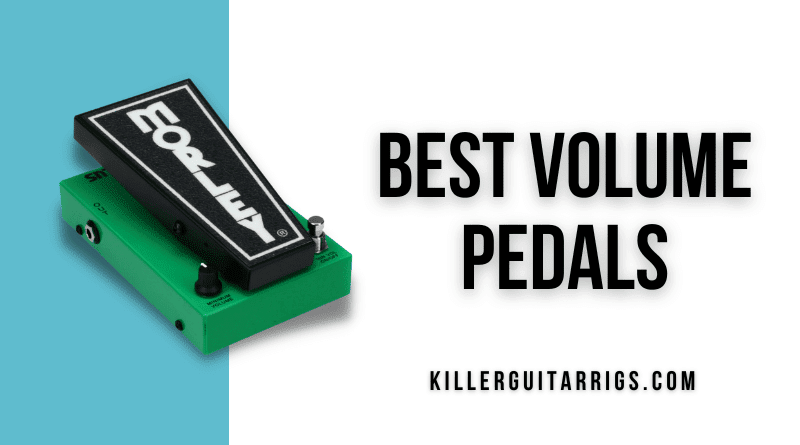While it’s the texture and time based pedals that tend to get the most love, simple expression units like volume pedals can add significantly to your tone in a much more subtle way, and we think the Morley 20/20 Volume Plus Pedal is one of the best around. It’s compact, and it’s extremely well made. It uses high end electro optical components that give you exceptionally smooth taper, and noise free operation. It’s a great option for anybody who plays live, too, thanks to its glow in the dark treadle and LED status indicator. It’s one of the few pedals that comes with a lifetime warranty, so it’s guaranteed to be reliable for players of all ability levels. With a spec sheet like this, the Morley 20/20 Volume Plus Pedal is the obvious choice for our Top Pick award.
If you’re looking for something really high end, we think you’ll love the Lehle Mono Volume Pedal S. This is a pedal engineered for maximum precision, and does so by way of a magnetic sensor that ensures wear free operation and pinpoint volume accuracy. It features a buffered direct output which does a superb job with retaining signal integrity, something that’s especially useful in setups using long cable runs or multiple pedals. This pedal boasts adjustable gain presets, and USB out for MIDI control, yet more features that makes this one of the most versatile options out there. It’s pricey, but we feel it’s worth every penny and that’s why we’ve named the Lehle Mono Volume Pedal S as our Editor’s Choice.
The Electro Harmonix Expression Pedal (Single Output) is a solid expression pedal designed for controlling adjustable parameters of compatible effects pedals, including volume. It’s a super simple, but ruggedly built unit, so it offers excellent durability and performs reliably under pressure. Its volume control is smooth and precise, and allows for even more precision with its range control knob. As well as precision it also offers versatility by way of its polarity switch, allowing you to reverse the control direction to suit your playing style. It’s one of the most affordable units around, and thanks to its superb build quality and performance, we’ve named the Electro Harmonix Expression Pedal as our Best Budget choice.
Read more about our review process.
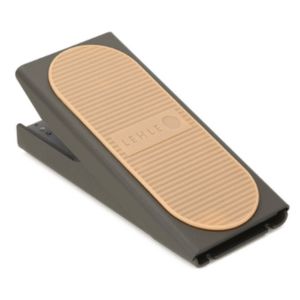
Lehle Mono Volume Pedal S
Features: USB MIDI Control, Magnetic control, No mechanical potentiometer
Benefits: Extremely durable, light weight, No tone coloration
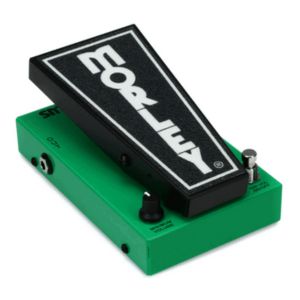
Morley 20/20 Volume Plus
Features: Electro optical control, Cold rolled steel housing, Compact size
Benefits: No scratchiness, Smooth audio taper, Road worthy construction
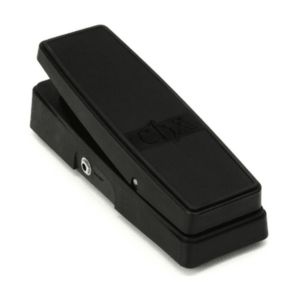
Electro-Harmonix Expression Pedal
Features: Reverse button, Rugged casing, Passive power
Benefits: Simple design, Lightweight and easy to transport, Non slip performance
Contents
Individual Reviews
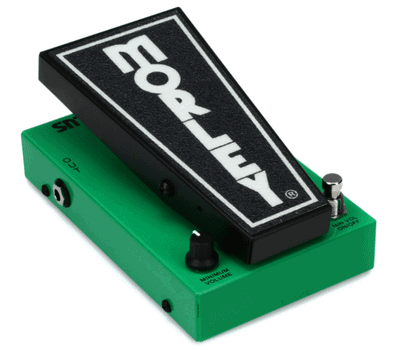
Morley 20/20 Volume Plus
A sturdy and smooth volume pedal.
Morley is well known for providing musicians with useful and durable solutions. With the 20/20 series, this company carried out a complete revamping of its line of pedals. One of the most impressive attributes of this new series of pedals is their pedalboard-friendly size.
The Morley 20/20 Volume Plus pedal comes with a premium buffer circuit, as part of the revamped line of Morley pedals. Besides featuring a more compact form factor than Morley’s previous volume effect pedals, the 20/20 also protects against signal degradation, thanks to its buffered circuit and electro optical Design.
The first thing we loved about this pedal is how easily it fits in our pedalboard. It took about half the space of our usual pedal, while still delivering a comfortable user experience. Naturally, the fact that it is smaller than old-school units is a massive plus.
Once we started playing, we really liked what we heard. The Morley 20/20 Volume Plus preserved the clarity and integrity of our Strat tone while we went through our long pedal chain. This is thanks to the premium buffer circuit, which ensured that no frequencies are lost on the way to our Fender Twin Reverb amp.
One of the features we liked the most about this pedal is the foot-selectable Minimum Volume knob. Located on the bottom right-hand side, and working together with an activation switch on the left-hand side, this knob allowed us to dial the minimum volume we wanted. It functions similarly to a boost, and we were able to easily go between rhythm parts, to hotter leads.
Finally, the Morley 20/20 pedals felt very durable and ready to take on the rigors of the road. This company is so sure of the durability of its 20/20 pedal series that it offers a lifetime warranty on them. In short, a great-sounding and convenient volume pedal.
Verdict: The Morley 20/20 Volume Plus features a more compact size and a premium buffer circuit that protects your tone from signal degradation. It is built like a tank and features a minimum volume knob and switch that can easily increase your volume to go from rhythm to lead parts, as well as an effective electro optical design.
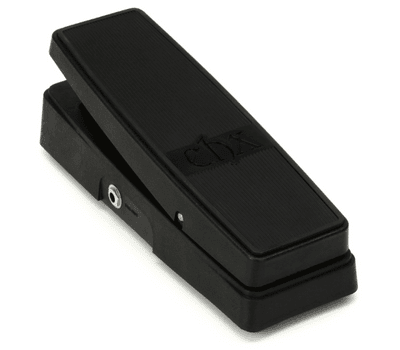
Electro-Harmonix Expression Pedal
A simple yet effective solution for volume and expression.
Electro Harmonix is among the top pedal companies and has a rich history of providing top-notch quality and durability. The EHX Expression pedal falls in line with what we'd expect from this company, but adds affordability to the mix, making it a fantastic choice as a volume pedal.
The Electro-Harmonix Expression Pedal features a casing made from incredibly rugged polymer, built just right for harsh gigging conditions. Besides making this pedal very durable, this particular material significantly contributes to reducing weight, another top concern for working guitarists.
We placed this pedal on our pedalboard and started our tests by performing some swells on our Strat going to our Twin Reverb. We loved how smooth this pedal felt, giving us a consistent volume increase with no bumps or dips at any point. This is a primary consideration for volume effect pedals, as some lesser-quality models tend to have spots where the volume opens up too fast or too slow in relation to the rest of the swell.
Another aspect that we truly liked about this pedal is how simple it is, with a straightforward plug-and-play operation. On the bottom right side of this unit, there is a range control as well as a polarity switch that can help with fine-tuning the overall performance.
As the name of this pedal clearly indicates, it can also be used as an expression pedal to control a variety of parameters. This EHX unit also comes with a Reverse button so the user can change the direction of the effect in regard to the Expression Pedal.
In short, an affordable, well-built, and rugged pedal that can be used for volume as well as expression.
Verdict: The Electro-Harmonix Expression Pedal comes with an enclosure made from rugged polymer, making it durable and able to take the abuse of the road. With a smooth pedal and mechanism that provides consistent volume augmentation, the EHX Expression Pedal is a good and affordable choice.
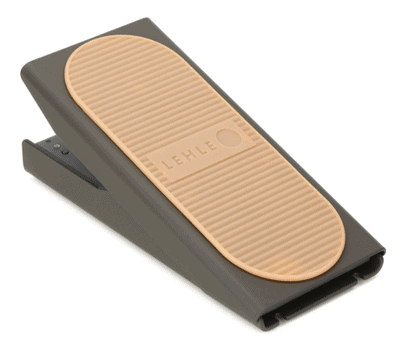
Lehle Mono Volume Pedal S
A superior choice for discerning musicians.
The Lehle Mono Volume pedal became a popular choice for professional guitarists, and now the company has released a smaller and lighter version. With fantastic durability and no mechanical potentiometer, this pedal is very well-designed and ensures that your tone remains consistent at all times.
The Lehle Mono Volume Pedal S features a reduced size and weight when compared to the original Lehle Mono Volume, in addition to USB connectivity that gives you MIDI capability for extended control options.
The first thing we loved about this pedal is how well-designed and smooth it is. Unlike most, its construction does not involve a mechanical potentiometer. Instead, the Lehle uses a magnetically controlled Blackmer VCA.
We put this pedal to the test using our Les Paul plugged into our Twin Reverb, and started by performing some basic extended chord swells. This pedal gave us very smooth and precise control over our volume and was very responsive to our foot movement.
The Mono Volume S delivered our tone with great signal preservation and the entire range of the sweep. This fact alone makes it a superior choice. However, another fantastic trait of this pedal is that it will likely last you a lifetime. Not only is it built tough, but the fact that it has no mechanical potentiometer to wear out extends its useful life even further.
In short, a smooth volume effect pedal that is built to last and preserves the integrity of your tone.
Verdict: The Lehle Mono Volume Pedal S comes in a reduced size and weight to its predecessor, the Lehle Mono Volume. It gives you USB connectivity for MIDI capability and greater control options. Additionally, it is magnetically controlled, ensuring that it will last you for a long time.
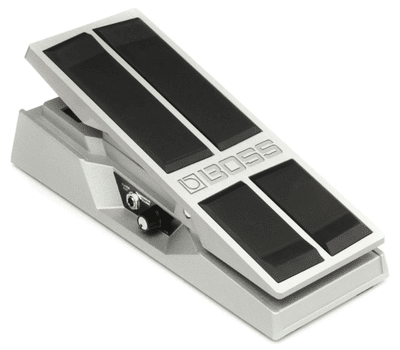
Boss FV-500H Foot Volume Pedal
The newest development in the storied lineage of Boss' volume pedals.
Boss' history goes way back as this company popularized and diversified the concept of stompbox pedals in the 80s. The BOSS FV-300 volume pedal became an industry standard and was in production for 14 years, paving the way for the FV-500H.
The Boss FV-500H comes from a lineage of popular guitar pedals and features the usual durable die-cast design that this company is renowned for. We really liked the new stylish design that this pedal boasts, and put it to the test by adding it to our signal chain to try out.
The first thing we liked about the VF-500H is how comfortable it felt, with a smooth pedal action and no bumps or dips. After performing a few swells, we plugged in our TC Electronic PolyTune 3 to the tuner output jack and our Dunlop DVP3 to the expression output.
Next, we set the Minimum Volume knob located at the left side of the pedal to about 12 o’clock. Playing through a few of our modulation and time-based pedals, our tone remained consistent, with no loss of frequencies.
In other words, besides being comfortable and having nice action with useful features, the Boss FV-500H preserved the integrity of our tone, a vital feature for folks with long effect chains. We also liked the inclusion of an adjustable torque that allowed us to set up this pedal with the resistance that was just right for us.
In short, a very durable and well-made pedal that comes from Boss’ rich tradition. That said, there are other options that offer a smaller footprint for a similar price.
Verdict: The Boss FV-500H builds upon the heritage of popular pedals by this company. It features the usual durable die-cast construction that Boss is famous for but a modern and stylish design with useful features like a separate tuner out, expression out, and minimum volume knob.
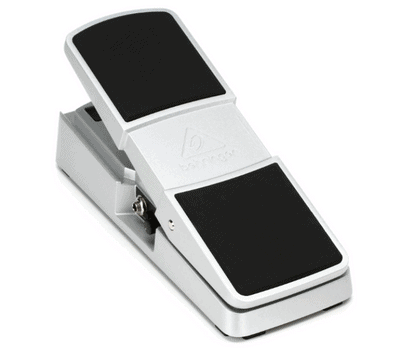
Behringer FC600 V2 Expression Pedal
A convenient and well designed volume pedal.
Behringer is a respected brand that developed a reputation for offering affordable solutions for musicians. This volume pedal comes with fantastic features that let you make the most of it, and for less than 100 Dollars.
The Behringer FC600 V2 Expression Pedal is built with a die-cast metal chassis and an overall durable design. We set it up on our pedal board and tried it with our Gibson Les Paul into our Vox AC 30 amp.
The first thing we liked about this pedal was the rubberized footboard. Not only does it offer a nice grip when in use, but also felt comfortable to the touch when we played barefoot. We also enjoyed the convenience of having our TC Electronic PolyTune 3 connected via the Tuner Out, which allowed for discreet and silent tuning, another great design feature of the Behringer.
The FC600 V2 allowed us to create smooth swells and responded well to the speed of our swells as well. Additionally, this pedal allowed us to change the torque, a great feature to get just the right action and preferred level or resistance on the pedal
Other useful features on the FC600 V2 include an adjustable polarity switch on the side that allows the user to maximize compatibility across devices. Additionally, we really liked the inclusion of the adjustable volume range, which we used to get just the right level for different contexts and uses.
In short a good option that lets you customize it your way and delivers good tone preservation. The only drawback is that it feels a bit bulky and takes up more space than we’d wish for.
Verdict: The Behringer FC600 V2 Expression Pedal features a rugged die-cast metal chassis that ensures durability even under harsh working conditions. With an adjustable polarity switch and adjustable torque to get just the right resistance, this is a nice pedal that gets the job done.
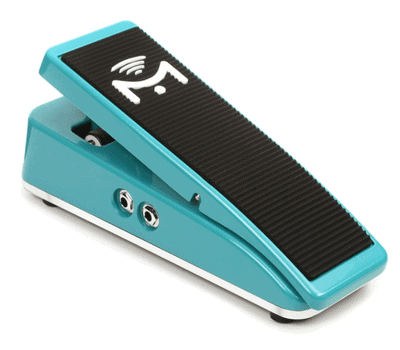
Mission Engineering Inc VM-1 Aero
An ergonomic design for folks that prefer to sit down.
Mission Engineering is one of the top brands when it comes to volume and expression pedals. The VM-1 Aero provides great tone integrity and stylish looks and comes with a sealed potentiometer rated for over 1 million operations, guaranteeing the durability of this pedal.
The Mission Engineering VM-1 Aero volume is a slick-looking unit with a curved heel position to make it more comfortable for players that perform sitting down. We placed it in our long signal chain using our Strat and Twin Reverb amp.
The first thing we liked about it is that it preserved our tone at all times, whether clean or distorted. Mission Engineering designed this pedal with point-to-point wiring precisely for this reason, as tone preservation is essential to any quality volume effect pedal.
Additionally, this pedal comes with a completely isolated tuner output. Besides all the functionality that this pedal offers, we really liked how stylish the VM-1 Aero is. It comes with a Sea Green paint job, and its LED base can light up in three different colors.
Its design features a curved heel which not only looks classy but also made it more comfortable for us to play while sitting down. Another thing that we liked is how the rubber top part of the pedal prevents accidental slippings and gave us a strong foot grip at all times.
In short, a very cool-looking pedal that delivers quality tone and a comfortable playing experience. It may feel a bit big for some, in which case we suggest you consider more compact units.
Verdict: The Mission Engineering VM-1 Aero volume is a slick-looking pedal with point-to-point wiring that preserves signal integrity. With a curved heel position, this pedal is more comfortable for players that perform sitting down, and is very well built as well as stylish.
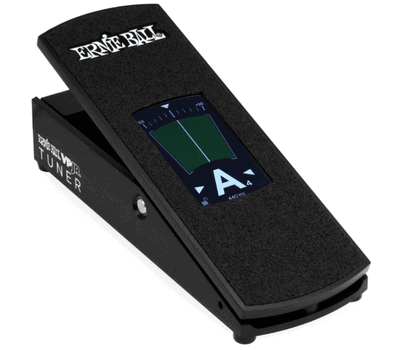
Ernie Ball VPJR Tuner / Volume Pedal
Traditional design and construction with the convenience of a screen.
Ernie Ball volume pedals have been around for a while, and are popular because of their functionality and durability. The VPJR brings all the things we like about those pedals and adds a tuner as well as a very useful screen that can be a lifesaver for playing in a band or large ensembles where volume changes are a must.
The Ernie Ball VPJR Tuner / Volume Pedal features the well-known grade-A construction as the company’s popular volume and expression pedals but adds an accurate and convenient chromatic tuner, as well as a graphic volume display.
As simple as it sounds, the fact that this pedal displays the volume that we were currently playing at, is our favorite feature about it. We loved how big and bright this display is, and the visual reference can make a big change for situations where you are playing with a band and have different effects and volume needs for different songs or parts.
We also liked how the screen toggled between tuner and volume modes depending on our signal level. For instance, while playing a riff or power chords, the screen displayed our volume level. On the other hand, when we were idle or plucked each string lightly, the screen would automatically change to tuner mode.
And just as we’d expect from Ernie ball, the VPJR pedal is built like a tank. It comes with a PVC-coated braided Kevlar cord for greater durability and strength, as well as better traction for the potentiometer. We really liked the inclusion of a discrete buffer circuit, as we have an overcrowded pedalboard that adds ups to a long chain of effects. Our tone was preserved at all times with the VPJR.
In short, a great pedal that follows the tradition of Ernie Ball’s durability and quality. That said, it may feel a bit cumbersome as it is not a small unit and light unit, and takes up a considerable amount of space on a pedalboard.
Verdict: The Ernie Ball VPJR Tuner / Volume Pedal features the same quality as the company’s popular volume and expression pedals and adds a very useful graphic volume display, as well as a tuner.
How To Choose The Right Pedal For You
Volume pedals are often among the very first-floor units that guitarists buy. This is because nearly all guitarists have a use for one, regardless of what style or guitar model they play.
That said, not all pedals are created equal. There are differences that will impact the result you get. Besides convenience and durability, other issues like tone preservation come into play, particularly with folks that have busy pedalboards with long signal chains.
Another important consideration is whether your guitar is using active or passive pickups. This will have a direct impact on which pedal you should get. Below we share a few considerations to take into account before making your purchase.
Passive Pedals
Passive pedals do not require a power supply in order to operate, making them convenient. Additionally, they do not use a buffer. These types are also less sensitive, come with a wider sweep, and tend to be more affordable.
Passive models can be either low-impedance or high-impedance. Low-impedance pedals are usually reserved for folks that have active pickups on their guitars. On the other hand, high-impedance models work well with instruments fitted with passive pickups.
High-impedance pedals are also great when placed directly after the guitar in your signal chain. Conversely, low-impedance pedals do well when placed after a buffer or buffered bypass effects circuit.
Active Pedals
Active pedals can be used with both active and passive pickups, giving you more versatility. However, they also require a power supply in order to operate, and are more expensive than passive models.
Part of the tradeoff is that active pedals come with a buffer that is more effective at preventing the loss of high-end frequencies, and tend to be better for your overall tone.
Uses
Another important consideration is how you will use the pedal. If it’s just a replacement for your guitar volume knob or amp volume knob, then the action of the pedal is not a major issue.
On the other hand, if you want to do swells, then the action of the pedal becomes a central issue. The action refers to the resistance that the pedalboard displays. Some folks like it low, others want a bit more resistance.
Volume swells are a common thing in a variety of styles, and they can add another dimension to the arrangement. In order to do them well, a pedal with an action that works for you is a must.
The best way to know what action you prefer is to try the pedal yourself. This is an area where no amount of online research can replace the feel of actually using the thing. Some come with adjustable torque, so the user can try different resistance or action levels and decide on which is the best for her or him.
Price
Price is always an important consideration, and here is no exception. They run the gamut from units that are below 100 Dollars to those that cost a few hundred.
The price difference is based on the quality of the pedal itself, its features, and the location where it was made. For instance, a pedal that offers construction with better materials and overall better design will usually be more expensive.
However, the extra dollars you spend will likely be felt once you plug the pedal into a long pedal chain, and see the quality of sound you get, among other factors.
Final Thoughts
Volume and expression pedals are very popular and come with a relatively simple mechanism. As opposed to other types of pedals, they do not come with many knobs or controls. As a matter of fact, some have the pedalboard, I/O, and nothing else.
That said, there are some key differences in the market, and, as with most things, you get what you pay for. We hope this guide has helped you understand them a bit better and narrow the field for you.
To recap our top picks for this article, the Morley 20/20 Volume Plus is our Top Choice for this list. This is a well-built pedal for durability that offers a smooth action. This pedal comes with a premium buffer circuit, and comes in the revamped line of 20/20 Morley pedals.
The Electro-Harmonix Expression Pedal is our Budget Choice, and offers a durable and effective solution for volume and expression. It features a rugged polymer construction in order to withstand harsh gigging conditions while offering low weight and convenience.
Finally, the Lehle Mono Volume Pedal S is our Editor’s Choice. This pedal is a wonderful option for professional guitarists and comes without a mechanical potentiometer. Instead, the Lehle employs a magnetically controlled Blackmer VCA for superior performance.

